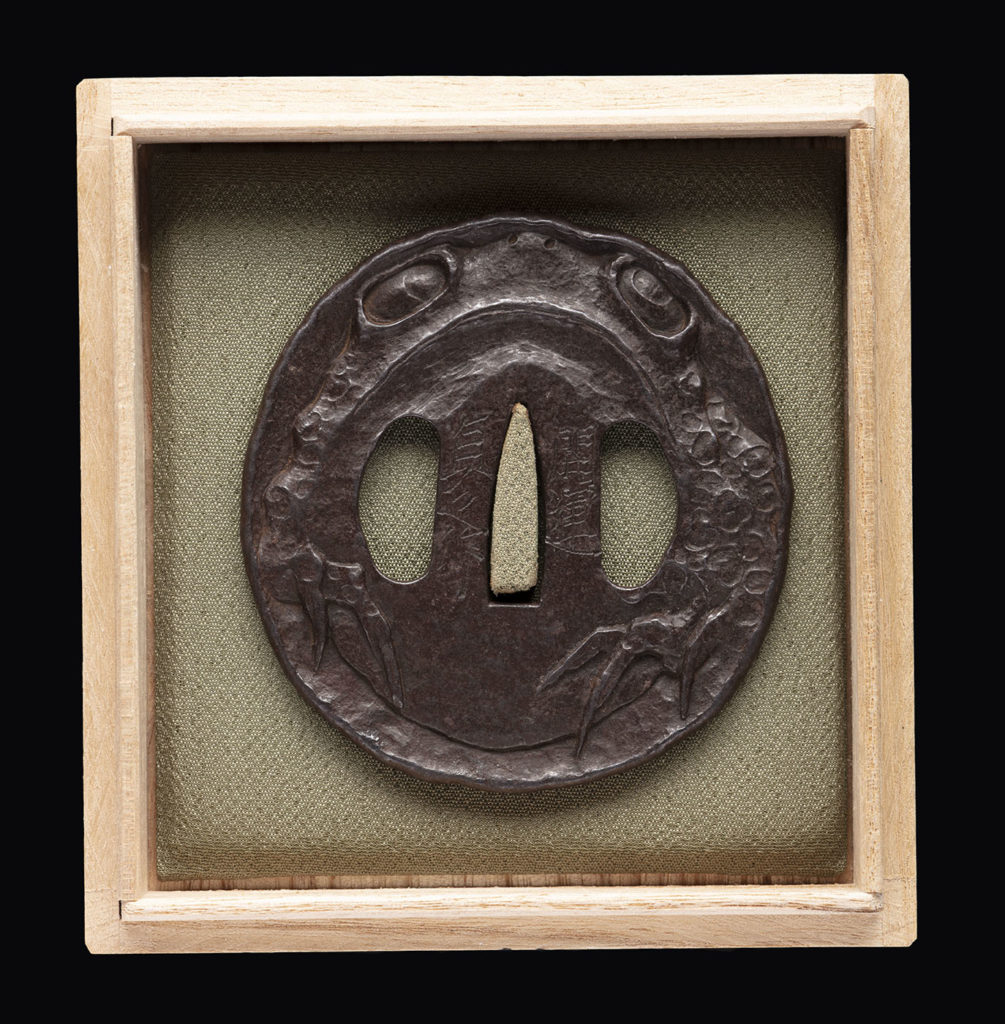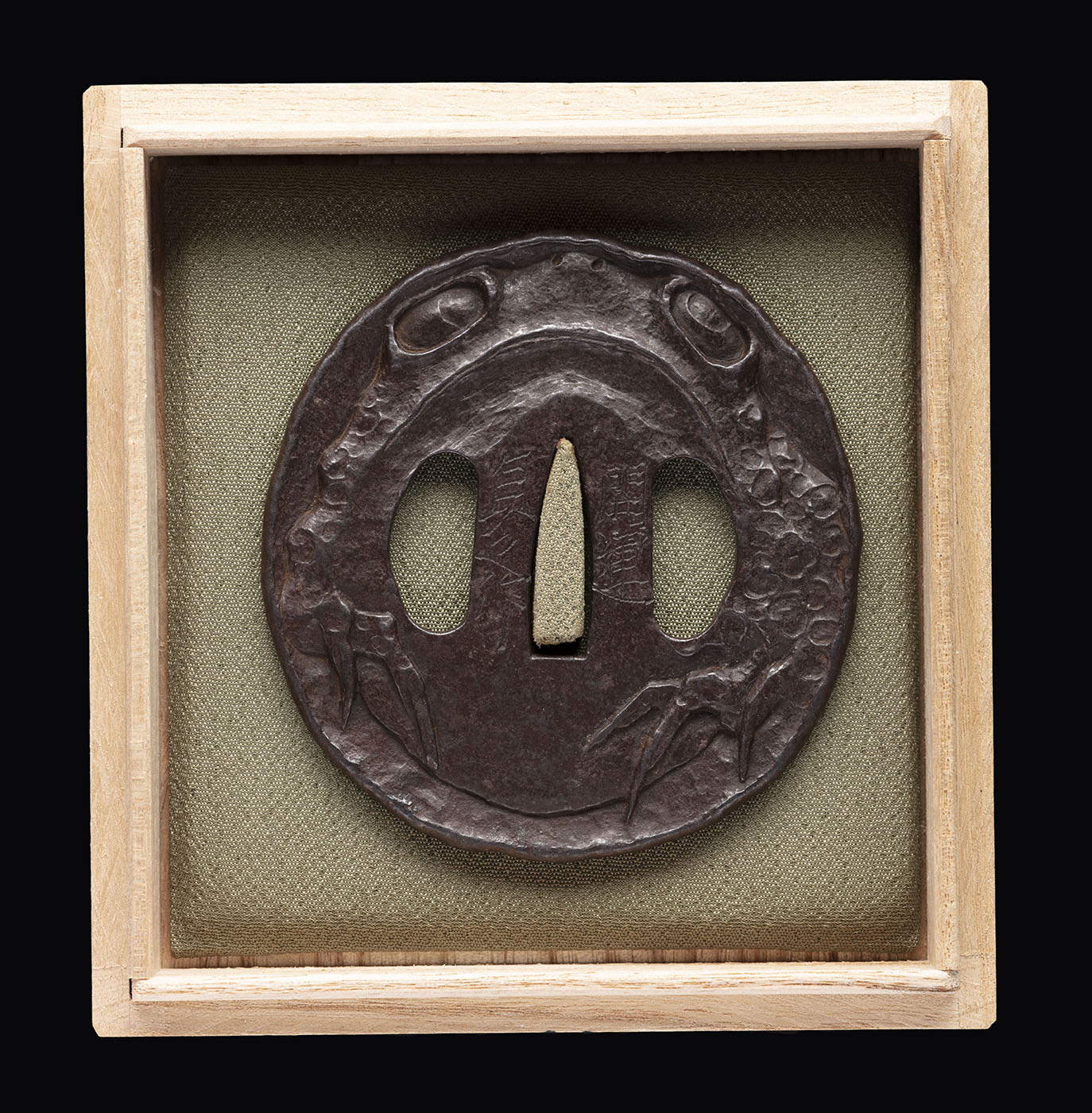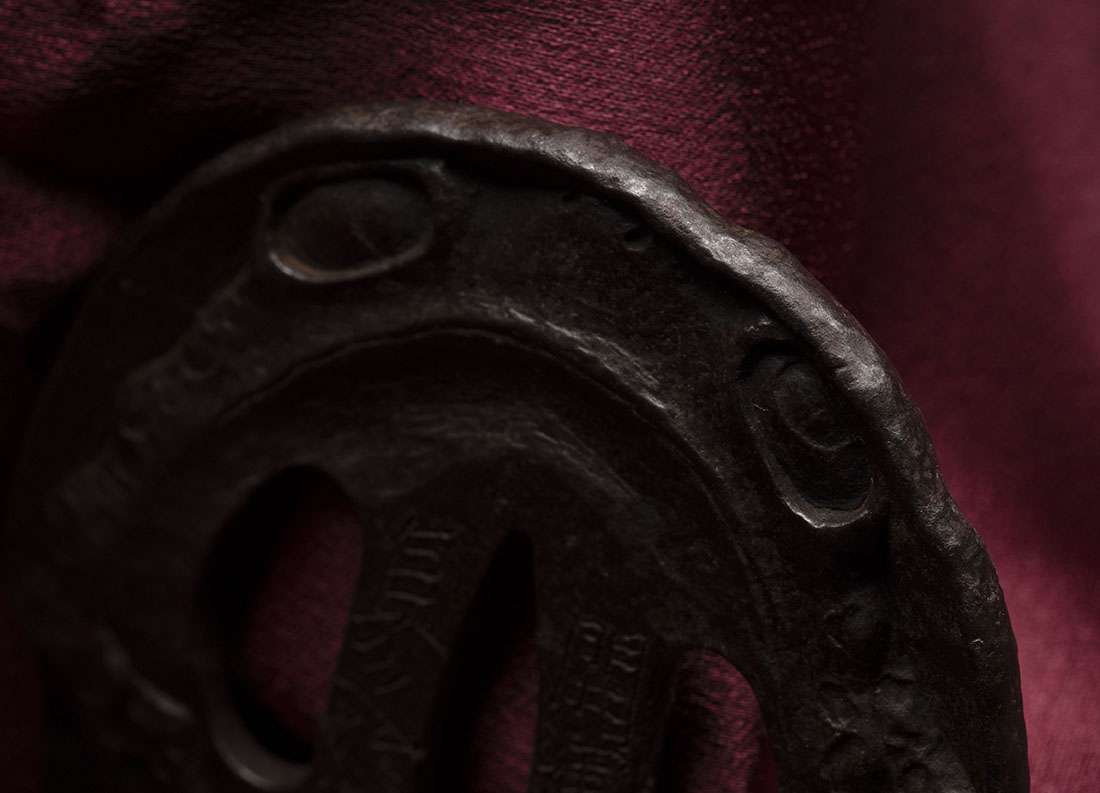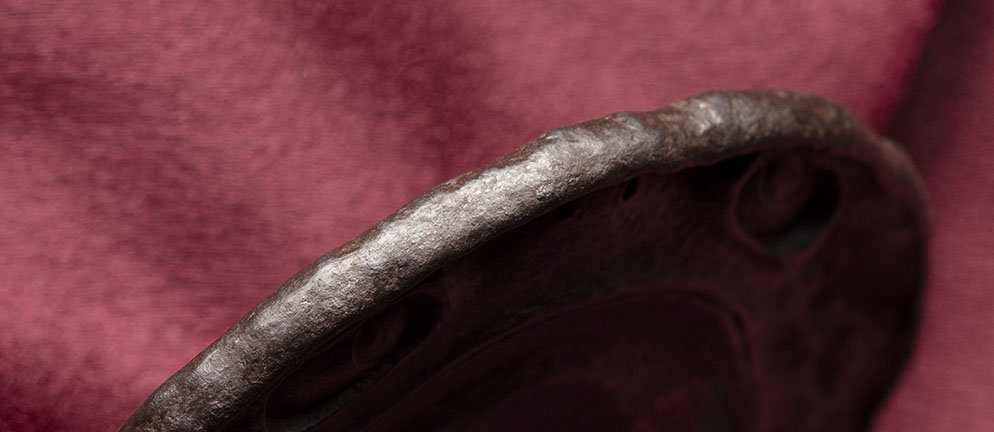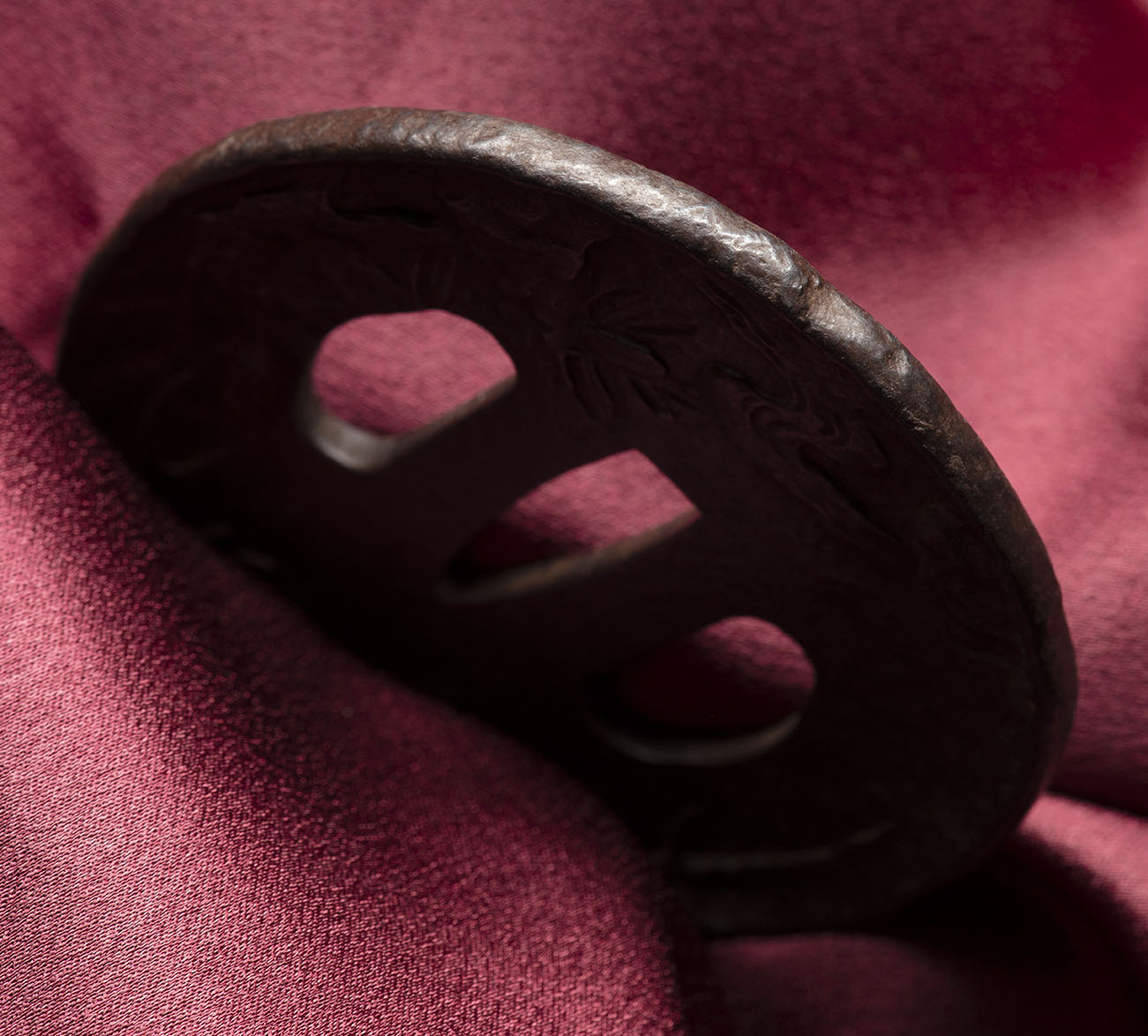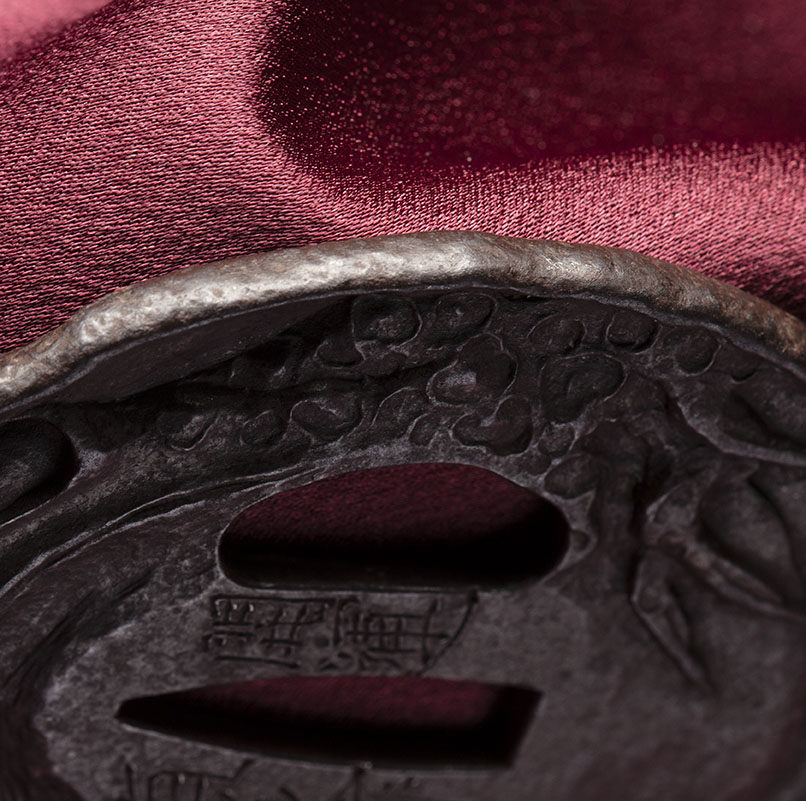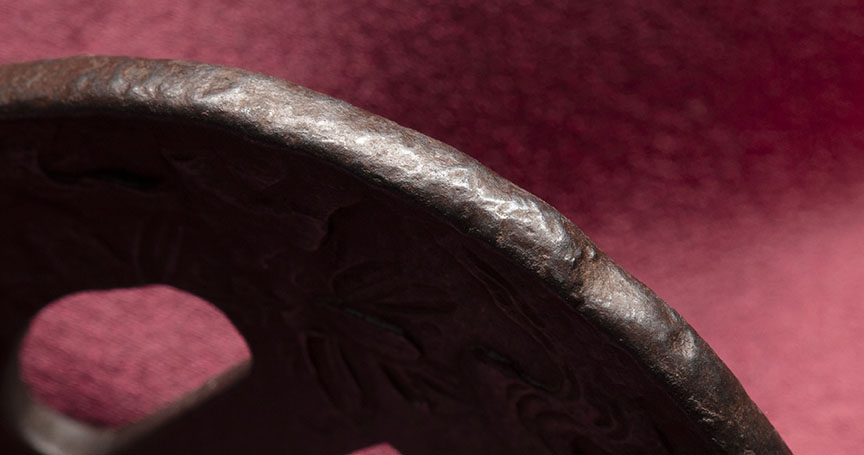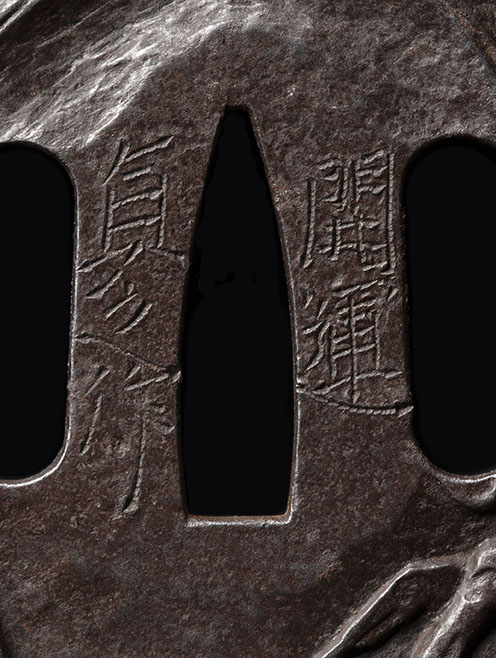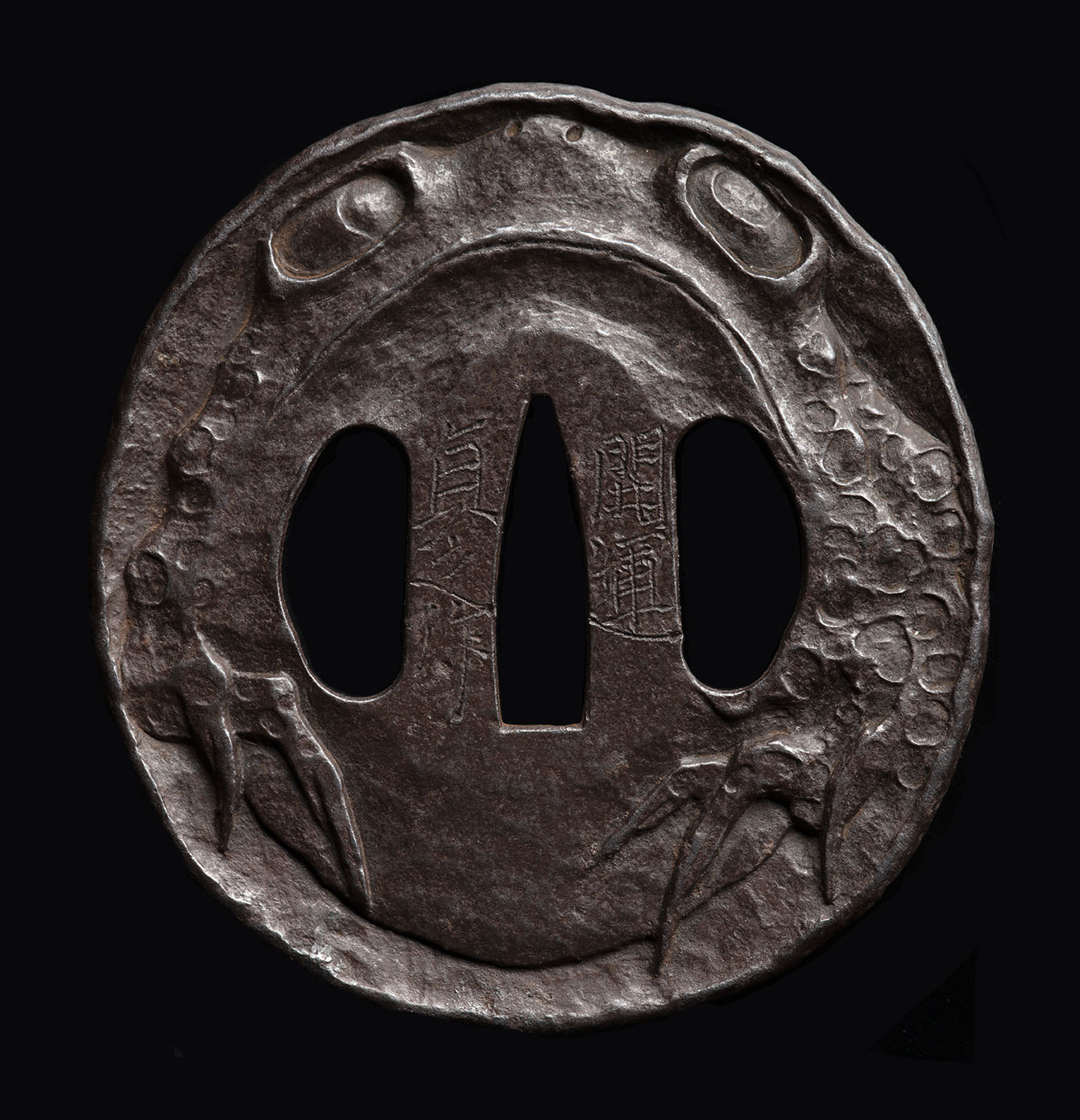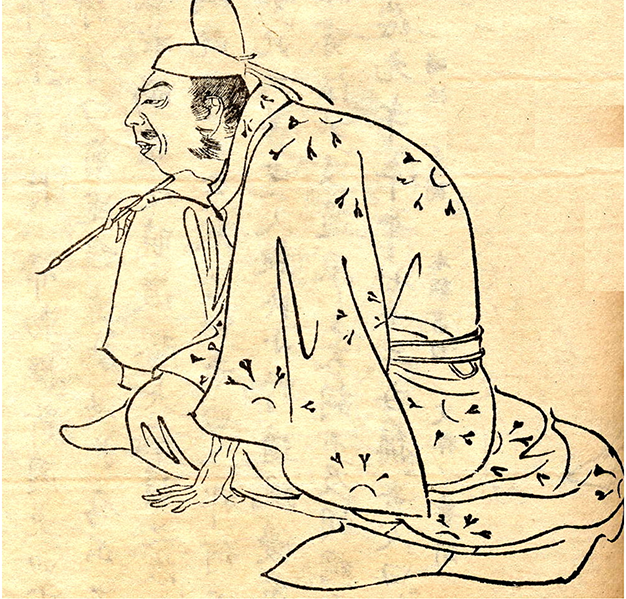Excellent Tsuba by 19th Century Swordsmith
Kaiun Sadayuki
It is not unusual that a swordsmith would occasionally make things other than swords. It is thought that the “Tosho” tsubas we see from the Muromachi and earlier eras, were actually made by swordsmiths as an inclusive part of forging a sword blade. In the early Edo period, makers of armor and matchlocks, such as Kotetsu and Kunitomo were also known to transition into making swords and tsuba as well. Even today, modern smiths make the occasional tsuba, fittings set, sculpture, cutlery, or tools, for custom orders, special events, or important persons.
Two generations of Kaiun Sadayuki hailed from Kaga province working from about 1804-1848. The Kaga region had been seen the production of swords since the Muromachi era when Sanekage, a student of the famous Ethu Norishige, settled there in the mid 14th Century. Other schools and makers followed such as the Fujishima and Hashizume Schools. During the Edo period, the Maeda Daimyo controlled the production of swords from the Katsukuni and more notable Kanewaka schools.
Regarding Sadayuki as a fittings maker, Robert Haynes’s reference “The Index of Japanese Sword Fittings and Associated Artists” notes:
“iron plate tsuba carved as a frog seen afront, covering the whole surface of the plate, signed: Kaiun Sadayuki. He made several tsuba with this design and subject.”
Another tsuba with near identical design was listed and sold at Bonham’s London Auction on May 13th, 2008. From the catalog image shown (lot 151), it is clearly made and signed by the same hand as this example.
At first, the theme is not plainly obvious. It’s a frog and looks like a sad frog at that. Poor little froggy…. On the reverse is a Willow tree near the bank of a stream. Perhaps just some natural decoration for someone who likes frogs and streams, and Willow trees? I am always struck with the wonder and joy that even in the simplest designs of Japanese art, there is an underlying theme or message. Perhaps a riddle, an allegory, or even a pun. With mindful examination we can see the frog is not sad but is actually looking skyward with an expression of intent. Frog-like “zanshin” if you will. The whole picture becomes clearer when the frog and the willow are brought together in one image in the mind…
The design of this tsuba is a parable about a moment in the life of Ono no Michikaze (894-966), also known as Ono no Tofu, one of Japan’s most famous and revered calligraphers. Ono no Michikaze lived and worked in the Heian era (794-1185), and in company with Fujiwara Sukemasa and Fujiwara Yukinari, they are considered the founders of a traditional Japanese calligraphy as a pure Japanese art form. The story opens when Ono no Michikaze is feeling discouraged and unsatisfied with his calligraphy, so he goes for a walk along the bank of a stream. He happens upon a frog that is jumping with great effort to reach a hanging willow branch, unsuccessfully. Ono no Michikaze watches as the frog attempts to grab it, jumping over and over again, and thinks to himself how the little frog will never be able reach it. At the moment he is thinking this, a breeze catches the willow and bends the branch down just enough so that on the frog’s eighth attempt, it at last grasps the willow branch and clings to it. Michikaze is astounded and comes to the conclusion that the frog created the opportunity to succeed through shear perseverance. Inspired by the little frog’s achievement, Ono no Michikaze set back to his endeavors and accomplishes new heights of calligraphic art.
This story became so famous in the Edo period that the picture of him, the frog, and the willow are the subject of a Hanafuda playing card that continues to this day with the scene of Michikaze, a willow tree, and a frog, known as the November “Rain Man” Card.
This tsuba is in magnificent condition. It has a nice weight in hand, and the iron has a satin luster with an even dark chocolatey patina. The details are crisply sculpted and the mei is clear and sharp. The mimi is hammer texture with some small nodular bones. While the nakago ana shows very faint evidence of having been mounted to a blade, the nakago ana appears ubu and perhaps it was only mounted upon the blade it was made for from the start. The hitsuana are also unaltered and do not show evidence of having had plugs either installed or removed. It is in superb condition overall and demonstrates the talent and diversity a swordsmith is capable of holding.
It has not been submitted to shinsa to the best of my knowledge, but confidence is very high, and I will be happy to discuss terms of guarantee with purchase.
- Measures: 80.0 mm x 76.5 mm x 4 mm
SOLD
Legacy Arts has another tsuba with this theme by Unno School master Yoshimori. Click here to see it as well.
